How to grow cannabis with aeroponics
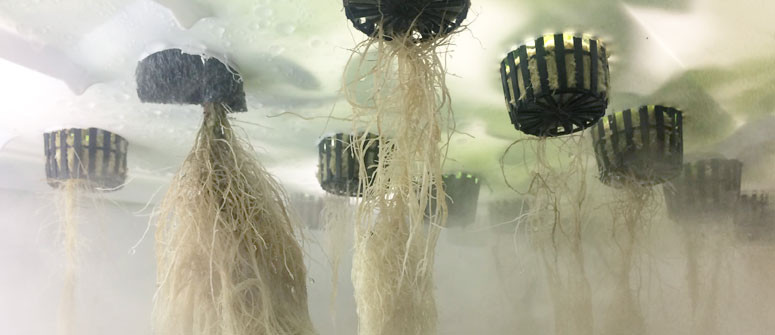
If you want strong root systems and massive yields, then aeroponics might be for you. But you should know, it's a tricky system that can go very wrong if you don't know what you're doing. Read on to find out all about aeroponic cannabis cultivation, and see if it's right for you!
Contents:
Most plants have evolved to grow in soil, but it’s also possible to grow them by exposing the roots directly to water—known as hydroponics. But have you ever thought about growing plants directly in the air? You may have come across specific air plants that do exactly this—but you can also do it with cannabis.
Growing weed aeroponically is an advanced technique that, when effective, provides huge yields. When it goes wrong, though, it can be game-over very quickly.
In this article, we look at how and why to grow aeroponic cannabis.
What exactly is aeroponic cultivation?
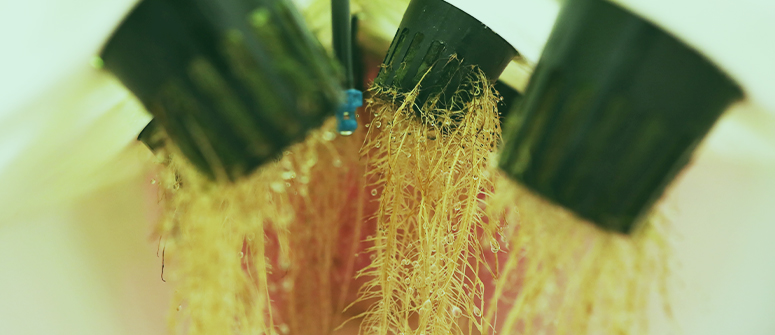
An aeroponic system is one that forsakes any growing medium other than moist air. Initially invented in the first half of the 20th century as a way to study plant roots as they grow, it has now become a popular means of growing in its own right.
Aeroponics is particularly popular for growing clones until they are ready to be transplanted, but it can also be used to grow plants from seed to harvest, with some claiming it has the potential to result in bigger, more potent plants. It’s not the most popular form of cannabis cultivation, but those who use it tend to swear by it.
How does aeroponics work for cannabis?
An aeroponic setup works by suspending plants at the top of a large chamber. The base of their stem is sealed in a foam collar, and below this collar their roots hang down into an empty chamber. Below this chamber is a reservoir filled with nutrient-rich water, and misting devices regularly spray this water up onto the roots.
The benefit of this method is that the roots have a constant supply of fresh oxygen, which helps them to grow rapidly and stay healthy—roots love oxygen. The regular misting keeps them fresh and delivers a frequent supply of nutrients, helping the entire plant to grow. Despite not being a hydroponic setup, it’s crucial to ensure that the roots never dry out, or they will begin to die quickly.
If you grow plants from seed, then you’ll need to germinate them somehow. In theory, you could do this in a plant basket in the aeroponic system. However, it would be better to start them in a propagator and then transplant them later. Rockwool is a good inert medium for germinating cannabis seeds for hydroponic or aeroponic growing systems, as you can transplant the seedlings without disturbing their roots.
Does aeroponics increase yield?
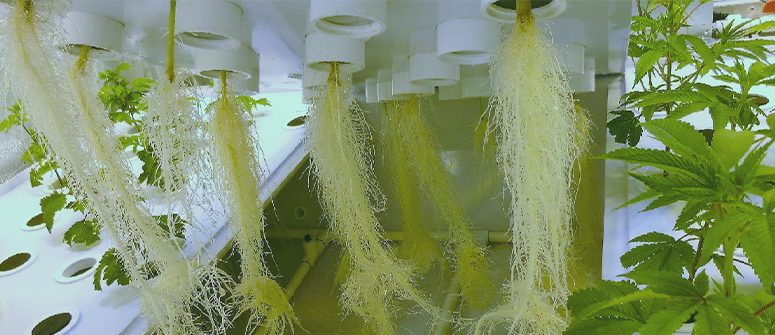
It is said that aeroponic systems can significantly increase cannabis yields, but this comes with a big caveat: you have to get it right!
Performed effectively, the roots have constant exposure to nutrients, moisture, and oxygen in good ratios, allowing them to develop optimally, leading to faster and more abundant growth, and ultimately, bigger yields.
However, aeroponic systems are also very sensitive, and disruption and mistakes can cause disproportionately negative effects that may substantially reduce the final yield compared to a soil grow.
Pros of aeroponics
- Faster growth
- Bigger yields
- Lack of soil reduces pests and pathogens
- Optimal delivery of water, nutrients, and oxygen to roots
- You can grow more plants per metre squared
- Uses less water
Cons of aeroponics
- Challenging to master
- Complex setup
- Mistakes are costly
- Root problems are more likely
- Much more involved than soil
- Less complex terpene profiles than plants grown in soil
Common types of aeroponic systems
Broadly, there are two types of aeroponic systems (and many specific models within these two categories). These can be characterised in many ways, but here we’ll discuss them based on whether they have two separate reservoirs.
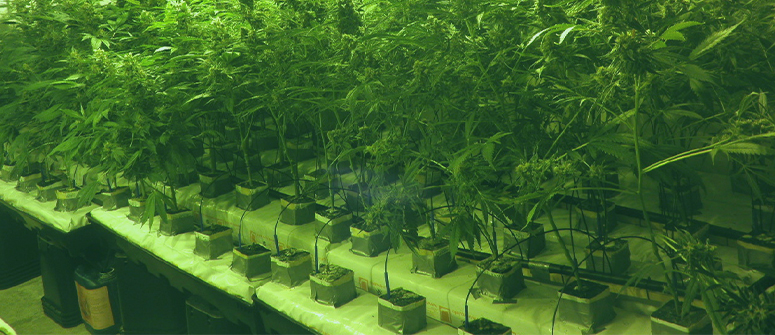
Separated systems
These systems can be considered the most effective, as they have two distinct reservoirs. One holds the water that will be misted onto the roots, and contains a specially balanced nutrient ratio and pH level that ensures the roots receive the optimal solution.
The second chamber collects water after it has been misted. The water is then processed, adjusted to optimal levels, and channelled into the first chamber where it can be reused. As such, these systems allow water to be recycled, without compromising the quality of that which is sprayed onto the roots.
What’s more, these systems tend to create a much finer mist, with droplets as small as 50 microns in diameter. This mist doesn’t appear as droplets to the eye. Rather, it creates an incredibly humid environment with a very high moisture content. However, it is not true humidity as the moisture is not caused by water vapor, but by miniscule droplets.
Single systems
These systems are often lower-quality or DIY. They feature a single water reservoir from which water is sprayed onto the roots, and to where water returns after it is sprayed. The downside of systems such as this is that, over time, the reservoir’s nutrient balance and pH will get thrown off and require adjustment. So generally, these systems are less automated and require greater care.
What’s more, the misters in these systems will likely create much larger droplets, visible to the naked eye.
How to grow cannabis with aeroponics: step-by-step
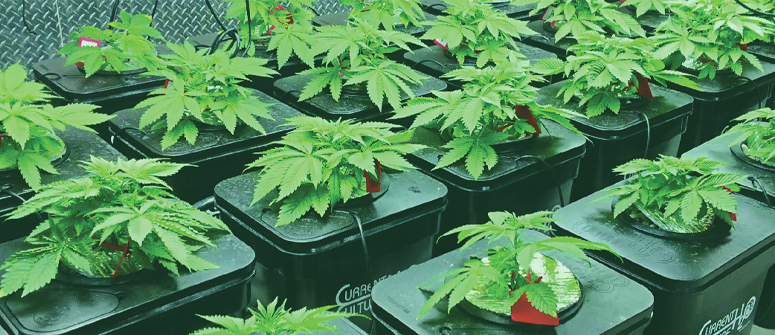
As aeroponic systems can vary greatly, as can growing needs, there’s no single, all-encompassing guide to growing weed aeroponically. So below, we will provide a step-by-step overview that’s at once general enough to apply to all growers, but informative enough to be meaningful.
The first section will outline how to use aeroponic systems to prepare clones for transplant, and the second will detail how to grow full plants from seed.
From clone
Aeroponic systems are widely used to prepare clones for transplantation. As these systems are perfect for rapid and strong root development, they are favoured by those who regularly grow cannabis clones.
The following instructions will assume you have selected and properly removed a clone from the mother plant already. It will also assume you have lights and understand how to use them.
Equipment
- Aeroponic system (bought or homemade)
- Cannabis clone
- Neoprene collars (if not included in the system)
- Root stimulant
- Liquid nutrient mix
Instructions
- Ensure all equipment is thoroughly cleaned and working properly.
- Dip the cut end of your clone in rooting stimulant, as this will encourage faster root growth.
- Place the stem of your clone through the neoprene collars. The tip should just show through the bottom.
- Place it in the appropriate spaces in the chamber.
- Following the manufacturer’s instructions, mix nutrients with water and fill the reservoir.
- Adjust pH as necessary until it is between 5.0 and 6.0.
- Bring the root temperature to between 18 and 20°C.
- Switch on the system.
- After a few weeks, the clone should have healthily developed root systems, at which point they can be transplanted to a medium of your choice.
From seed
Growing entire cannabis plants in aeroponic systems is also totally viable and can yield great results. Here’s how to do it.
Equipment
- Aeroponic system (bought or homemade)
- Liquid nutrient mix
- Cannabis seeds
- Rockwool starter cubes/blocks
- Rooting stimulant
- Propagation chamber
Instructions
- Soak Rockwool cubes in water with a pH of around 5.0. Then, soak in a rooting stimulant/very light nutrient mix.
- Place cannabis seeds into the holes in the centre of the cube and push them to the bottom.
- Leave in a propagation chamber until they germinate.
- Allow seedlings to develop until they have two true sets of leaves.
- Transplant into the aeroponic setup. There’s no need to remove the Rockwool, as the roots will just grow out of the bottom. Fix the plants in place with neoprene collars at the base of their stems.
- Add the correct nutrient solution with a pH of 5.0–6.0 to the reservoir.
- Switch it on.
- You now need to care for your plants for their entire life cycle. Nutrient solutions and light exposure will need to be adjusted for each stage of the plants’ lives, as requirements differ depending on which stage of growth they are in.
- Harvest when ready.
Aeroponics vs hydroponics
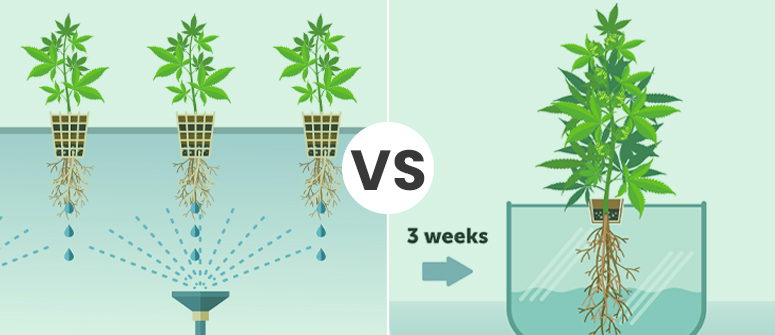
Aeroponics and hydroponics are very similar. The key difference between the two is that with hydroponics, the roots hang in heavily oxygenated water, whereas with aeroponics, the roots are exposed to very moist air. It’s a subtle difference, but an important one nonetheless.
Another way to look at it is this: if a hydroponic system breaks down, then the roots will drown in water that is no longer being oxygenated, as the pumps won’t be working. But if an aeroponic system breaks down, the roots will dry up and die from dehydration, as the misters will cease to work.
All going well, the two systems work in very similar ways.
Is aeroponics the key to bigger cannabis yields?
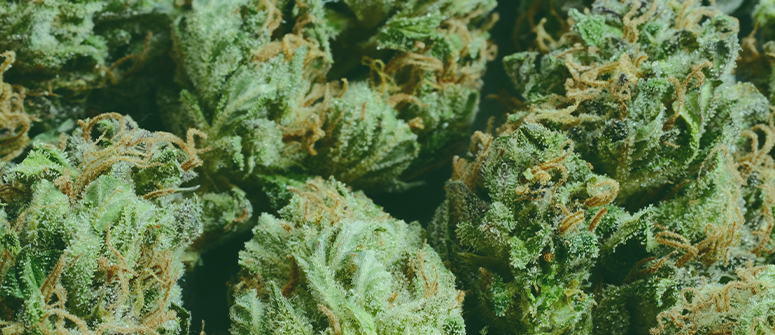
Before getting your aeroponic system to grow high-quality ganja, consider the following. Aeroponic systems are usually recommended for professional growers with solid cannabis growing experience. This is because things can easily go wrong, very fast. If there is a power outage and the roots don’t receive water, they will dry out. Overnight, the entire root system can die. Therefore it's imperative to have the system running 24/7, and to have stored power in case of emergency. Here are some more tips:
- Having a solid timer system and stable wiring allows the spray timer to be perfectly synchronised, preventing any undesired irregularities.
- The vapor should not be sprayed 24/7. Rather, a timer should be set for every couple of seconds. This allows the roots to also get plenty of oxygen.
- The reservoirs should not be transparent, otherwise algae can develop, which can block the spray nozzles.
- The temperature for the roots should not exceed 23°C. The perfect root temperature lies around 18–20°C. Maintain appropriate water temperatures. You can always purchase a water cooler, which is quite expensive.
- The following is crucial: cannabis plants grown in aeroponic systems become gargantuan! Since the roots are not anchored in any medium, make sure to have a good physical support system. ScrOG is the best way to go.
- Finally, cannabis grown in aeroponics is very sensitive to pH levels. Therefore, you must have reliable pH meters to measure exactly what’s being sprayed on the roots.
The key to bigger yields is ensuring your plants have everything they need, whatever your setup may be. It’s true that an aeroponic system can eke a lot out of cannabis plants—but so can a soil system employed by a master grower. That said, if you’re looking to maximise yields and broaden your growing expertise, give aeroponics a try. Who knows, once you try it, you may never go back to soil!




